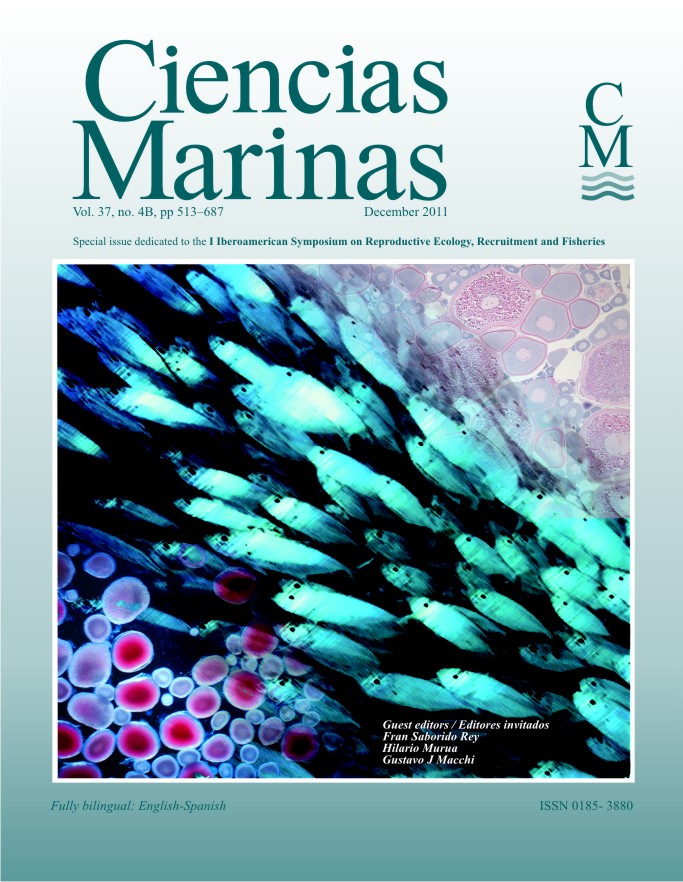Analysis of the reproductive potential of two stocks of Engraulis anchoita in the Argentine Sea
Main Article Content
Abstract
Relative batch fecundity, spawning frequency, size at 50% maturity, sex ratio, and egg production were estimated for the Bonaerense and Patagonian Engraulis anchoita stocks. Samples were collected during 19 research surveys carried out over the main spawning seasons and areas of both groups from 1993 to 2008. Reproductive potential between stocks was compared by analyzing the length-class structure and considering environmental variations. Daily egg production varied between 0.2 × 107 and 7.3 × 107 oocytes and the mean annual value was higher for the Bonaerense than the Patagonian stock (2.9 × 107 and 0.54 × 107 oocytes, respectively; P < 0.019). In both stocks, larger size classes produced more oocytes than smaller and more abundant females. No correlation was observed between egg production and adult biomass and between egg production and age-1 recruits. Length at first maturity was lower for the Bonaerense than the Patagonian stock (100.3 and 119.8 mm total length, respectively; P < 0.001). Bonaerense and Patagonian spawning frequency estimates were 0.125 and 0.116 (statistically significant differences were not observed, P > 0.788), and mean relative batch fecundity values were 508 and 493 oocytes g–1 (P > 0.680), respectively. Mean annual relative batch fecundity values for the Bonaerense stock showed a negative trend (P < 0.016) in the period 1993–2008, coinciding with a 4 ºC increase in mean sea surface temperature in the area during the same period.
Downloads
Article Details
This is an open access article distributed under a Creative Commons Attribution 4.0 License, which allows you to share and adapt the work, as long as you give appropriate credit to the original author(s) and the source, provide a link to the Creative Commons license, and indicate if changes were made. Figures, tables and other elements in the article are included in the article’s CC BY 4.0 license, unless otherwise indicated. The journal title is protected by copyrights and not subject to this license. Full license deed can be viewed here.

